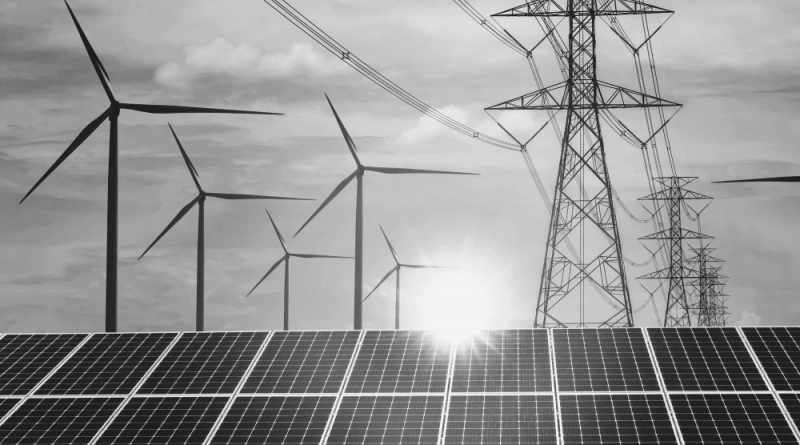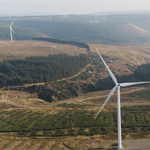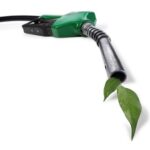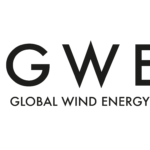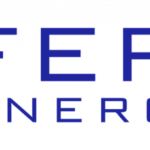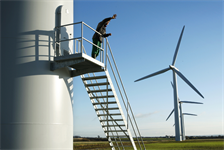Job creation and clean energy go hand in hand in post-pandemic recovery
Energy Disrupter

Vaccine approvals are paving the way for an eventual end to the pandemic. While there is light at the end of the tunnel, recovery from the economic devastation left by COVID-19 will be one of the greatest challenges Washington policymakers have ever faced. Our country will need to support jobs for hundreds of thousands of Americans who have been displaced from businesses that will never again open their doors. At the same time, the incoming administration has committed to tackling climate change, promising a cleaner energy future for Americans. Fortunately, our economic recovery and cleaner future can go hand in hand in the post-pandemic world.
A new, first-of-its kind study released by the American Clean Power Association (ACP), in partnership with the American Wind Energy Association (AWEA), details the potential of clean energy resources—wind, solar, energy storage, hydropower, and other renewables—to unlock impressive economic growth and achieve majority renewable electricity generation within the next decade.
The report, conducted by international analysis group Wood Mackenzie, finds that reaching a majority renewables grid will deploy over $1 trillion in capital investment into the American economy over the next decade, while supporting 980,000 direct, renewable energy jobs, stabilizing wholesale power prices, and reducing U.S. carbon emissions by over 60 percent.
Targeted administrative actions and legislative policies are essential for the U.S. to achieve these benefits within the next ten years. This includes a heavy emphasis on transmission expansion to unlock wind and solar resources, increasing energy storage capacity to maximize the power output of these clean resources, and improving grid infrastructure to smooth the pathway to a 50 percent renewable electricity sector.
Under the right policies, average wholesale prices will remain stable or decline through the decade. Transmission, energy storage additions, and sufficient grid reserve margins will maintain grid stability and reliability. Total capital investment to reach 50 percent renewables will top $1 trillion by 2030, with at least a quarter of that investment occurring local to where wind, solar, and storage projects are built. AWEA’s recently released Clean Energy Road Map lays out how the U.S. federal government can rapidly accelerate this economic growth and renewable energy deployment through executive and legislative action starting in 2021.
The job benefits from a 50 percent renewable energy future will be felt in states from coast to coast. For example, Indiana, Pennsylvania, California, Ohio, New Jersey, New York, and Virginia will each gain over 30,000 new jobs, with Illinois, Maryland, and North Carolina each adding over 20,000. Another 11 states will add at least 10,000 new jobs as part of the transition to a cleaner electric grid. These careers include those in new and expanded domestic manufacturing facilities to provide the local supply chains required for clean energy development.
Striving for high renewable penetration not only serves clean energy goals, but also supports economic growth. With these actions and policies in place wind, solar, energy storage, and transmission will directly employ nearly 1 million Americans by the end of the decade, including over 800,000 Americans in construction and technician jobs, alongside 173,000 in factory, distribution, and development jobs. These high-quality jobs in the clean energy workforce pay an average of $60,000-$110,000/year. Significant investments in U.S. factories and domestic energy production will help achieve this progress and offer a new path to employment for displaced legacy energy industry workers as those industries begin to dial back.
State governments will also benefit from the renewable energy decade thanks to significant tax contributions from these projects. And these funds come at a time when states need it most—in the wake of COVID-19 spending that has left many state budgets decimated. Over the decade, wind and solar projects are expected to pay $39 billion in state and local tax payments. At the same time, landowners will see an influx of $25 billion, providing a drought-proof, cash crop.
This path can be a game changer, involving a commitment from the public and private sector to a long-term economic program, building a better energy system that will pay dividends for decades to come. The opportunity is right in front of us for a cleaner, more prosperous tomorrow.
Original Source: https://www.aweablog.org/job-creation-and-clean-energy-go-hand-in-hand-in-post-pandemic-recovery/

